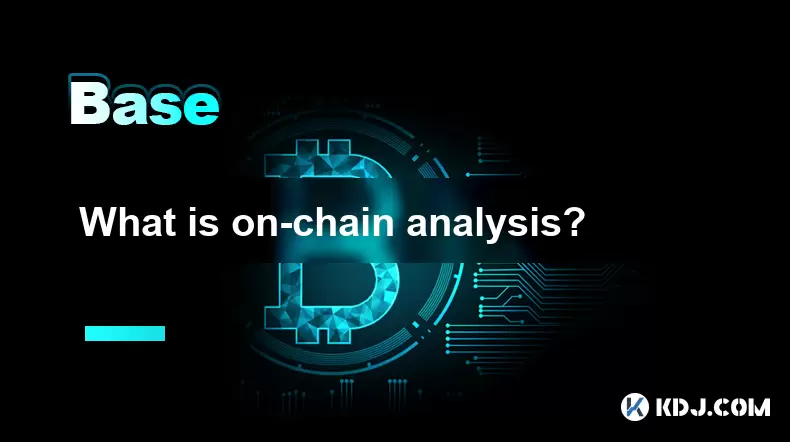-
 Bitcoin
Bitcoin $118900
0.42% -
 Ethereum
Ethereum $3710
-2.88% -
 XRP
XRP $3.513
-2.96% -
 Tether USDt
Tether USDt $1.000
-0.01% -
 Solana
Solana $203.0
3.65% -
 BNB
BNB $765.5
-1.29% -
 USDC
USDC $0.9998
0.00% -
 Dogecoin
Dogecoin $0.2671
-4.18% -
 Cardano
Cardano $0.8817
-3.63% -
 TRON
TRON $0.3139
-0.64% -
 Hyperliquid
Hyperliquid $44.34
-5.45% -
 Stellar
Stellar $0.4637
-4.08% -
 Sui
Sui $3.908
-2.59% -
 Chainlink
Chainlink $19.34
-2.62% -
 Hedera
Hedera $0.2712
-3.77% -
 Avalanche
Avalanche $24.97
-4.13% -
 Bitcoin Cash
Bitcoin Cash $519.8
-1.48% -
 Shiba Inu
Shiba Inu $0.00001518
-3.74% -
 Litecoin
Litecoin $115.6
-2.21% -
 Toncoin
Toncoin $3.460
3.68% -
 UNUS SED LEO
UNUS SED LEO $8.977
-0.07% -
 Polkadot
Polkadot $4.460
-2.96% -
 Uniswap
Uniswap $10.53
-5.43% -
 Ethena USDe
Ethena USDe $1.001
0.01% -
 Monero
Monero $323.6
-0.36% -
 Pepe
Pepe $0.00001379
-2.60% -
 Bitget Token
Bitget Token $4.772
-3.90% -
 Dai
Dai $0.9999
0.00% -
 Aave
Aave $307.5
-6.66% -
 Bittensor
Bittensor $441.8
0.84%
What is on-chain analysis?
On-chain analysis leverages blockchain data to track transactions, detect patterns, and provide insights into market behavior and network health.
Jul 05, 2025 at 07:33 pm

Understanding the Basics of On-Chain Analysis
On-chain analysis refers to the process of examining and interpreting data that is stored directly on a blockchain. This includes transaction details, wallet activities, block confirmations, and other verifiable records. Unlike traditional financial systems where data can be opaque or centralized, blockchain technology offers transparency, making it possible to analyze every recorded event.
The primary goal of on-chain analysis is to derive meaningful insights from publicly available blockchain data. Analysts use this information to track asset flows, detect patterns, identify whale movements, and assess network health. Tools such as block explorers, graph visualization platforms, and proprietary analytics dashboards are commonly used to extract and interpret these datasets.
Key Components of On-Chain Data
Blockchain networks generate vast amounts of data with each transaction. The core elements of on-chain data include:
- Transaction hash: A unique identifier for each transaction.
- Sender and receiver addresses: Public keys representing participants in the transaction.
- Value transferred: The amount of cryptocurrency moved.
- Timestamp: When the transaction was confirmed.
- Gas fees: The cost paid by users to execute transactions or smart contract interactions.
These components allow analysts to build a comprehensive picture of user behavior and network dynamics. For instance, tracking large transfers between wallets can reveal institutional activity or market manipulation attempts.
Use Cases of On-Chain Analysis
One of the most prominent applications of on-chain analysis is in market intelligence. Traders and investors monitor blockchain activity to gain an edge in volatile markets. By observing inflows and outflows from exchanges, analysts can predict potential price movements.
Another major application lies in forensic investigations. Law enforcement agencies and compliance teams use on-chain tools to trace illicit funds, identify stolen assets, and follow money laundering trails. Services like Chainalysis and Elliptic specialize in providing blockchain forensics to government and private clients.
Additionally, network monitoring is another crucial use case. Developers and node operators analyze on-chain metrics such as block times, transaction throughput, and gas usage to ensure the health and scalability of a blockchain protocol.
Tools and Techniques Used in On-Chain Analysis
To perform effective on-chain analysis, professionals rely on a combination of open-source and commercial tools. Some of the widely used ones include:
- Blockchair, Etherscan, and Blockchain.com: These platforms provide real-time access to blockchain data through user-friendly interfaces.
- Dune Analytics: Allows users to query blockchain data using SQL-like queries and create visual dashboards.
- Glassnode and CryptoQuant: Offer advanced metrics and indicators derived from on-chain data for traders and analysts.
Techniques such as wallet clustering, transaction graph analysis, and address tagging help in mapping relationships between different entities. These methods are essential for understanding how funds move across the ecosystem and identifying key players in the market.
Challenges and Limitations of On-Chain Analysis
Despite its usefulness, on-chain analysis has several limitations. One of the main challenges is the pseudonymous nature of blockchain transactions. While all transactions are visible, linking them to real-world identities is often difficult without additional context or external data sources.
Another issue is data noise and complexity. Blockchains like Ethereum host thousands of smart contracts and decentralized applications (dApps), which can make tracking specific funds or behaviors extremely complex. Without proper filtering and interpretation, analysts risk drawing incorrect conclusions.
Furthermore, privacy-enhancing technologies such as mixers, zero-knowledge proofs, and multi-signature wallets can obscure transaction trails, making it harder to perform accurate analysis. As more privacy-focused protocols emerge, the effectiveness of traditional on-chain analysis may diminish unless new methodologies are developed.
Frequently Asked Questions (FAQ)
Q: Can on-chain analysis identify who owns a particular wallet?
A: Not directly. On-chain analysis can trace transaction patterns and group related addresses together, but determining the real-world identity behind a wallet typically requires off-chain information or KYC data from exchanges.
Q: Is on-chain analysis useful for short-term trading decisions?
A: Yes, many traders use on-chain signals such as exchange inflows/outflows, whale movement, and miner activity to time their trades. However, these signals should be combined with other forms of technical and fundamental analysis for better accuracy.
Q: Are there any privacy risks associated with on-chain analysis?
A: If a wallet address is linked to a personal identity, then yes. Reusing addresses, interacting with KYC’d exchanges, or participating in public dApp activities can expose sensitive financial behavior to third parties conducting on-chain surveillance.
Q: How do analysts differentiate between retail and institutional activity on-chain?
A: Institutional activity often involves large transactions, recurring patterns, and movement between known exchange or custodial wallets. Analysts use clustering algorithms and historical behavior models to distinguish between regular users and larger entities.
Disclaimer:info@kdj.com
The information provided is not trading advice. kdj.com does not assume any responsibility for any investments made based on the information provided in this article. Cryptocurrencies are highly volatile and it is highly recommended that you invest with caution after thorough research!
If you believe that the content used on this website infringes your copyright, please contact us immediately (info@kdj.com) and we will delete it promptly.
- Dianne Smith, a Spanish Doubloon, and JM Mason: A Pike County Tale
- 2025-07-23 08:30:13
- MoonBull vs. Turbo: Who Wins the Crypto Meme Coin Race in 2025?
- 2025-07-23 08:30:13
- PNC Bank & Coinbase: Banking on Crypto's Future, NYC Style
- 2025-07-23 06:30:12
- Ruvi AI: The Next Avalanche Riding the AI and Blockchain Wave?
- 2025-07-23 06:30:12
- Bullish Cryptos: BlockDAG Leads the Charge, Aptos Integrates WBTC, and More!
- 2025-07-23 07:10:14
- Crypto Coins Under $1 to Watch: BlockDAG, Stellar, Cronos, and Sei
- 2025-07-23 07:10:14
Related knowledge

What is the difference between CeFi and DeFi?
Jul 22,2025 at 12:28am
Understanding CeFi and DeFiIn the world of cryptocurrency, CeFi (Centralized Finance) and DeFi (Decentralized Finance) represent two distinct financia...

How to qualify for potential crypto airdrops?
Jul 23,2025 at 06:49am
Understanding What Crypto Airdrops AreCrypto airdrops refer to the distribution of free tokens or coins to a large number of wallet addresses, often u...

What is the difference between a sidechain and a Layer 2?
Jul 20,2025 at 11:35pm
Understanding the Concept of SidechainsA sidechain is a separate blockchain that runs parallel to the main blockchain, typically the mainnet of a cryp...

What is the Inter-Blockchain Communication Protocol (IBC)?
Jul 19,2025 at 10:43am
Understanding the Inter-Blockchain Communication Protocol (IBC)The Inter-Blockchain Communication Protocol (IBC) is a cross-chain communication protoc...

How does sharding improve scalability?
Jul 20,2025 at 01:21am
Understanding Sharding in BlockchainSharding is a database partitioning technique that is increasingly being adopted in blockchain technology to enhan...

What is the "crypto trilemma" of scalability, security, and decentralization?
Jul 19,2025 at 06:28pm
Understanding the Concept of the Crypto TrilemmaThe crypto trilemma refers to the challenge of simultaneously achieving scalability, security, and dec...

What is the difference between CeFi and DeFi?
Jul 22,2025 at 12:28am
Understanding CeFi and DeFiIn the world of cryptocurrency, CeFi (Centralized Finance) and DeFi (Decentralized Finance) represent two distinct financia...

How to qualify for potential crypto airdrops?
Jul 23,2025 at 06:49am
Understanding What Crypto Airdrops AreCrypto airdrops refer to the distribution of free tokens or coins to a large number of wallet addresses, often u...

What is the difference between a sidechain and a Layer 2?
Jul 20,2025 at 11:35pm
Understanding the Concept of SidechainsA sidechain is a separate blockchain that runs parallel to the main blockchain, typically the mainnet of a cryp...

What is the Inter-Blockchain Communication Protocol (IBC)?
Jul 19,2025 at 10:43am
Understanding the Inter-Blockchain Communication Protocol (IBC)The Inter-Blockchain Communication Protocol (IBC) is a cross-chain communication protoc...

How does sharding improve scalability?
Jul 20,2025 at 01:21am
Understanding Sharding in BlockchainSharding is a database partitioning technique that is increasingly being adopted in blockchain technology to enhan...

What is the "crypto trilemma" of scalability, security, and decentralization?
Jul 19,2025 at 06:28pm
Understanding the Concept of the Crypto TrilemmaThe crypto trilemma refers to the challenge of simultaneously achieving scalability, security, and dec...
See all articles

























































































